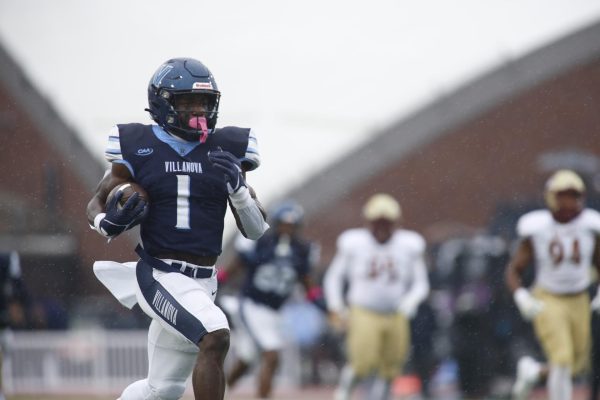Statistics projects generate interesting results
June 29, 2008
Several groups of Villanova students have conducted statistical research on topics from voting records to the Harry Potter fan base of the Villanova population. The research was assigned as a project for Dr. Michael Posner’s Introduction to Statistics I class.
The group “Da Muggles” looked at the Harry Potter fans at Villanova. They found that females were much more likely than males to have read all “Harry Potter” books and seen all “Harry Potter” movies; 45 percent of female students surveyed had read all the books, while only 30 percent of male students had read all books.
There was also a slight positive correlation between fitness and Harry Potter. To find this, the group developed a “Harry Potter Scale” based on numbers of books and movies seen and exercise. Higher numbers increased Harry Potter devotion.
“Students that exercised less than once a month scored, on average, a seven on the Harry Potter Scale, while students who exercised more than once a week scored a 13 on average,” freshman group member Mike Nail said.
The group also looked to see if there was a correlation between political leanings, religion and Harry Potter scale. However, it did not find any correlation.
The results did produce some interesting data on general student leanings. The students polled tended to lean more conservatively on economic issues and more liberally on social issues. Only 77.7 percent of the students polled were sure that God exists, and 13 percent of the students polled reported their religious views as agnostic.
An additional group looked at Villanova students’ general political affiliations: 52 percent of students polled reported Republican affiliations, 41 percent of students chose Democratic affiliates and 7 percent remained independent. Of those polled, 41 percent of students reported that they would vote for Hillary Clinton for president.
Another group focused on the attractiveness of Villanova students. The group looked at how students rate their attractiveness compared to how other students of the opposite sex rate them. For both males and females, students rated themselves higher than others rated them.
Females gave themselves on average 6.05 (out of 10, with 10 being the highest), while their male counterparts rated the females on average at 6.02. Males had more of a disparity, giving themselves on average 5.81 while females rated them at 4.3 on average.
Another group focused on happiness at ‘Nova. Of those students who were happy, 44 percent of students chose friends as the reason for their happiness. Of those students who were unhappy, 63 percent of students chose poor academics.
Another group looked at correlation between exercise and GPA. For females, there was a slight negative correlation between exercise and GPA. The more hours females exercised, the lower their GPA was. For males, there was no correlation.
The surveys were conducted as statistics projects and were as scientific as possible, according to Posner. For example, the Da Muggles randomly selected three residence halls to poll and then sampled everyone there on weeknights. To even out results, the group randomly selected the same percent of surveys compared to hall population from each one.
“There could still be some bias in our results,” Nail said. “One dorm selected was McGuire, so the survey leaned toward males with them representing 69 percent of the sample.”
Also, there could be some nonresponse bias.
“Overall, it was a very good experience,” Nail said. “I learned a lot about the practicality of statistics from this project,”
Nail’s reaction to the project is the goal Posner said he had in mind when assigning the project.
“In statistics, we’re trying to push away from ‘naked data’ just found in a book and have students find their own data that gets them excited and interested,” Posner said. “They can see first-hand how the surveying process works, how bias factors in and how to correctly interpret results.”
As for direction, Posner mostly gave the students free reign as to what they wanted to look into, offering guidance where necessary.
“I only required that the survey incorporate one categorical variable and one numerical variable,” Posner said. “They had to submit their hypothesis and results to me so I could offer suggestions and help with specific bias issues.”
Though it has been a large time commitment, Posner feels satisfied with the project and its results.
“As a student, conducting my own research was the most interesting part of my college learning,” Posner said. “I’m glad to be able to pass that on to my students today.”










